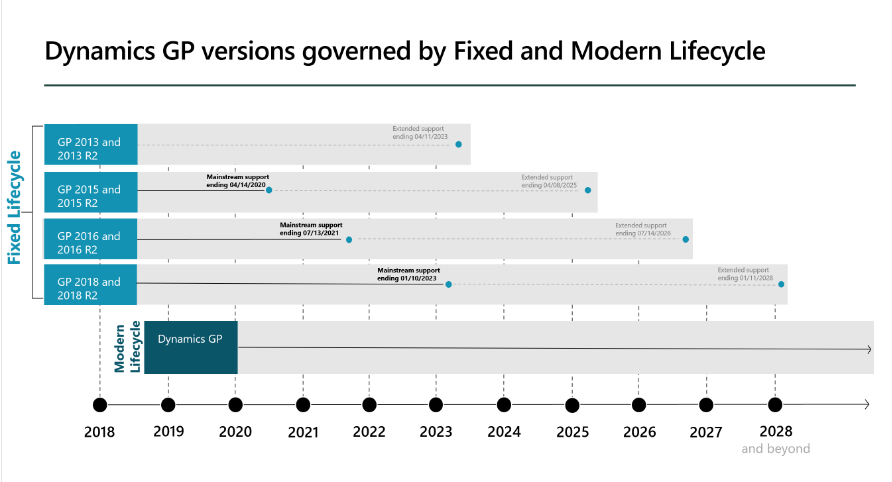Microsoft breaks down the Modern Lifecycle Policy in a documentation article available on their website. The image displayed above is sourced from Microsoft’s website and serves as a visual representation of their Modern Lifecycle Policy.
What is the Modern Lifecycle Policy?
The Modern Lifecycle Policy is a framework that Microsoft uses to provide consistent and predictable support and updates for its products. It was introduced in 2018 and applies to many of Microsoft’s major products, including Dynamics GP. Under this policy, Microsoft provides regular updates and support for a product for a set period of time, after which it may be retired or moved to a different support phase. It’s important for users of Dynamics GP to understand this policy so they can plan for updates and ensure they remain compliant and secure.
How does it differ from the traditional lifecycle policy?
The Modern Lifecycle Policy differs from the traditional lifecycle policy in several ways. Under the traditional policy, Microsoft provided mainstream support for a product for five years, followed by extended support for an additional five years. After that, the product was no longer supported. Under the Modern Lifecycle Policy, Microsoft provides regular updates and support for a product for as long as it remains in active use. This means that products may be supported for longer than 10 years, but may also be retired or moved to a different support phase more quickly if they are no longer widely used.
What are the benefits of the Modern Lifecycle Policy?
The Modern Lifecycle Policy offers several benefits for users of Microsoft Dynamics GP. First and foremost, it ensures that the product will continue to receive regular updates and support for as long as it remains in active use. This means that users can continue to rely on the product for their business needs without worrying about it becoming outdated or unsupported. Additionally, the Modern Lifecycle Policy allows for more flexibility in retiring or moving products to different support phases, which can help Microsoft better align its support resources with customer needs. Overall, the Modern Lifecycle Policy provides a more modern and flexible approach to product support that benefits both Microsoft and its customers.
What are the implications for Dynamics GP users?
For users of Microsoft Dynamics GP, understanding the Modern Lifecycle Policy is crucial to staying informed and compliant. The policy outlines the support and update options available for the product, as well as the timeline for when those options will be available. This information can help users plan for the future and make informed decisions about their use of Dynamics GP. Additionally, the policy provides a framework for Microsoft to deliver updates and support that align with customer needs, ensuring that the product remains relevant and useful for years to come.
How can you stay up-to-date with the Modern Lifecycle Policy?
To stay up-to-date with the Modern Lifecycle Policy for Microsoft Dynamics GP, it’s important to regularly check the Microsoft website for updates and announcements. You can also sign up for email notifications from Microsoft to receive alerts about changes to the policy. Additionally, it’s a good idea to work with a trusted Microsoft Dynamics GP partner who can help you navigate the policy and ensure that your use of the product remains compliant. By staying informed and proactive, you can ensure that your use of Dynamics GP remains effective and efficient for years to come.


